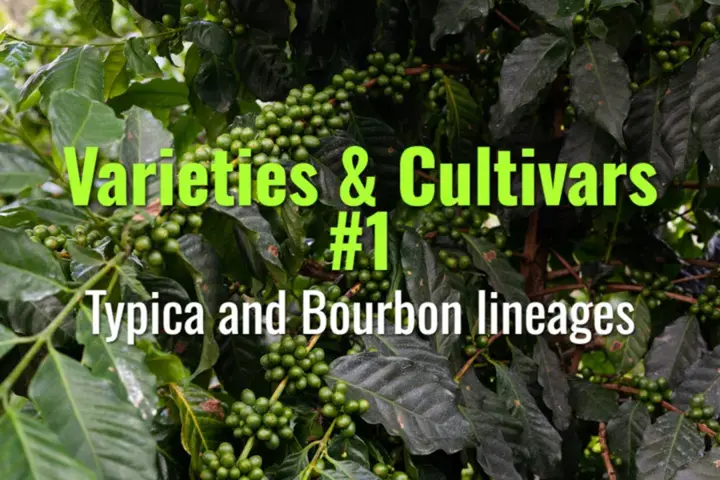Typica and Bourbon lineages
This topic explores the two foundational Arabica lineages—Typica and Bourbon—their origins, spread, genetic traits, and importance for modern coffee cultivation and flavor diversity.
- Coffee Basics Nerds
- 2 min read
Article 1 of 12 in Varieties & Cultivars/

Historical Origins
Typica
- Origin: Traces back to Yemen, spread by the Dutch to Java (Indonesia) in the 1600s.
- Global spread: From Java to India, then to Amsterdam, and eventually to the Caribbean and Latin America in the 1700s.
- Role: Became the genetic base of most New World Arabica cultivation.
Bourbon
- Origin: Introduced by the French from Yemen to Île Bourbon (Réunion) in the early 1700s.
- Spread: Later carried to East Africa (Tanzania, Kenya) and the Americas.
- Role: Produced higher yields than Typica, with distinct cup quality.
Morphological Traits
- Typica:
- Tall tree, conical form.
- Broad, elongated leaves.
- Beans: elongated, narrow.
- Yield: relatively low.
- Bourbon:
- Compact, rounder form.
- Slightly broader leaves.
- Beans: rounder and fuller.
- Yield: ~20–30% higher than Typica.
Flavor Profiles
- Typica: Clean, sweet, delicate acidity; floral and citrus notes; considered one of the finest cups.
- Bourbon: Balanced, complex, often with chocolate, caramel, and red-fruit notes; medium-high acidity.
Genetic Importance
- Typica lineage: Parent of varieties such as Maragogipe, Mundo Novo, Caturra.
- Bourbon lineage: Gave rise to SL28, SL34, Caturra, Catuaí, Pacas, Pacamara.
- These two lineages form the backbone of modern Arabica diversity.
Agricultural Considerations
- Typica: Low yields, disease susceptibility, but exceptional quality. Still cultivated in limited specialty markets.
- Bourbon: Higher productivity but also vulnerable to coffee leaf rust and pests. Remains foundational in Latin America and East Africa.
Legacy and Specialty Value
- Typica and Bourbon are often celebrated in specialty coffee for their heritage and cup quality.
- Their descendants dominate global cultivation, shaping the genetics of modern hybrids.
- Farmers and breeders continue to preserve these lineages as heritage varieties while crossbreeding them for resilience.
Lasting Importance
Understanding Typica and Bourbon is key to tracing Arabica’s history. They represent the root stock of global Arabica cultivation, embodying both the strengths and vulnerabilities of coffee’s genetic legacy.